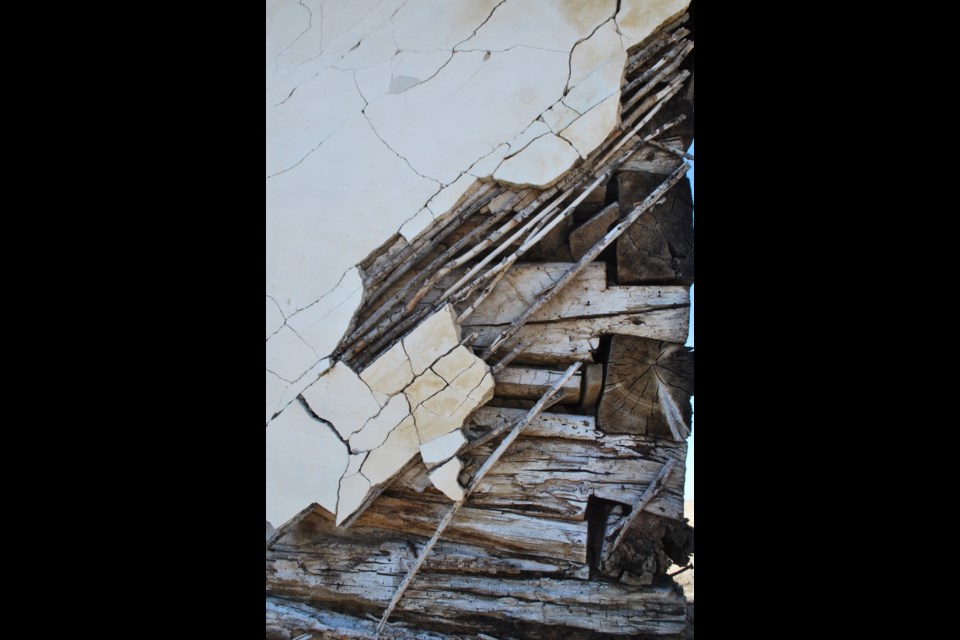BRESAYLOR — House building at Bresaylor settlement was quite different from today. These days you buy a blueprint and hire a contractor, who sources materials from your local lumber yard. This was not the case in the late 1800s.
First, the settlers had to search out tall straight trees, ideal for log cabins. Next, they had to cut them down using a hand saw or axe, and strip all the branches off. The logs were then hauled to the building site either by horse or ox. The settlers then peeled off the bark and let the logs dry. Each log was then cut to the desired length and fitted together to form the main part of the structure. Doors and windows would then be cut out. Most of the homes in the Bresaylor settlement were large two-story homes. This was to accommodate their large families, often around a dozen kids each.
After the log structure was built, the cracks would be filled with a homemade clay mixture. Small one-inch-thick willow sticks were then nailed to the outside of the home. A lime mortar was then plastered onto the outside leaving a smooth white finish.
The lime was made by the settlers themselves. First a pit was dug in the side of a hill. Large white to yellow limestones were gathered from the area and hauled to the pit. A fire was made in the pit and kept going for seven days, never allowed to go out. On the last day, the fire would be kept very hot, and cold water would be poured onto the limestones. The cold water would break the stones into pieces, which would then be crushed into powder. The lime mortar was also used for cementing bricks together for their chimneys. The bricks would come from the brick plant in Battleford.
Some of the houses also had thatched roofs made from long grass taken from sloughs, and sometimes rye straw. Clay was then used to bind the straw or grass together, and to the roof.
Some of the houses may have been painted on the inside with paint sourced from the natural paint mine northwest of Paynton. This area, used by First Nations Peoples for hundreds if not thousands of years, is now inaccessible. Beavers have dammed the area so extensively that the pigments are now underwater, except for the odd stick of wood in the dam showing traces of pigment. Before, a spring would bubble-up small quantities of pigment which ranged from yellow, orange, red, and variations in between. These pigments were then mixed with linseed oil and used for paint by the early pioneers.
The Bresaylor museum’s annual potluck was held last Sunday. Due to strong rains and tornado warnings, the event was relocated to the Paynton Seniors’ Centre. In spite of the weather, 41 people attended the event. Following the meal, guest speaker Floyd Favel spoke about his background and current work, as well as other topics including indigenous sign language, his new book The Story of Broken Knife Lookout and the Frog Lake massacre.
The Bresaylor Heritage Museum is open again for the summer by appointment only from June 30 to Aug. 31. Please phone Enola at 306-893-8002 or Bob at 306-895-2075 to arrange a guided tour by one of our volunteer staff. Check out the Bresaylor Heritage Museum Facebook page for more information.




